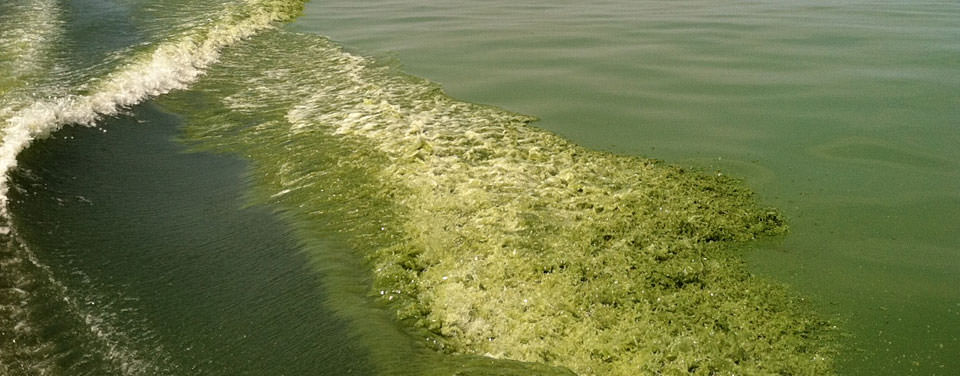How do we forecast harmful algal blooms?
Scientists can forecast a harmful algal bloom similar to how a hurricane is forecasted.

A boat cuts a green wake—a harmful algal bloom—in Western Lake Erie.
NOAA's Harmful Algal Bloom (HAB) Operational Forecast System in the Gulf of America identifies whether or not a bloom of algae is likely to contain a toxic species, where it is, how big it is, where it's headed, and if it could become more severe in the near future. Like a weather forecast, this system provides officials advance warning to test and close beaches and shellfish beds more precisely and for a shorter period of time.
This system relies on satellite imagery, field observations, models, public health reports, and buoy data to provide information on bloom events. Forecasters create a public HAB conditions report using this data and information to provide the likelihood of respiratory irritation impacts to people in the area.
Expert oceanographers at NOAA analyze available data and models in order to create accurate bulletins. To ensure the highest degree of accuracy, all operational HAB forecasts undergo secondary review prior to dissemination.
The Harmful Algal Bloom Operational Forecast System depends on the dedication, energy, and feedback from individuals at partner agencies and other organizations working on this issue. Blooms of harmful algae are not unique to the Gulf of America, so NOAA continues to work with local agencies in Maine, Massachusetts, Ohio, Washington, Oregon, California, and elsewhere in the U.S. to make new forecasts operational over the next five years.
Search Our Facts
Get Social
More Information
Last updated: 02/21/25
Author: NOAA
How to cite this article